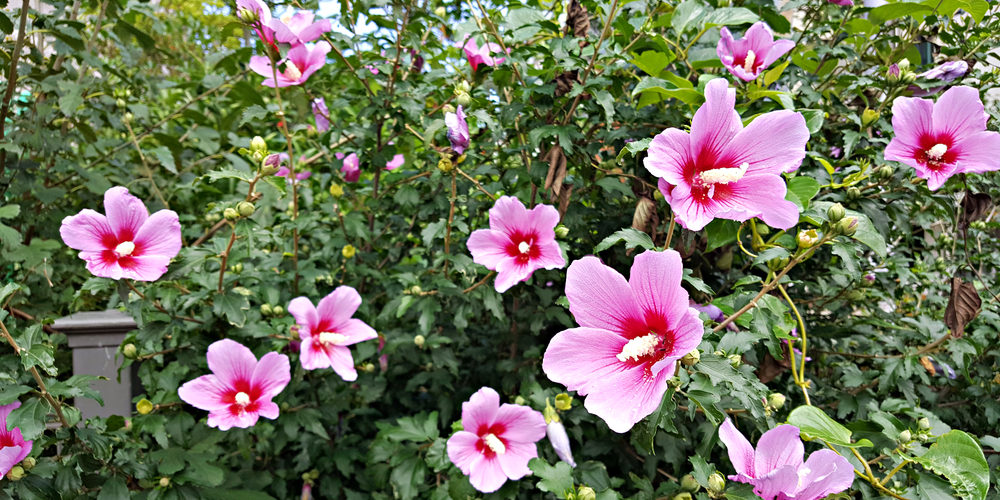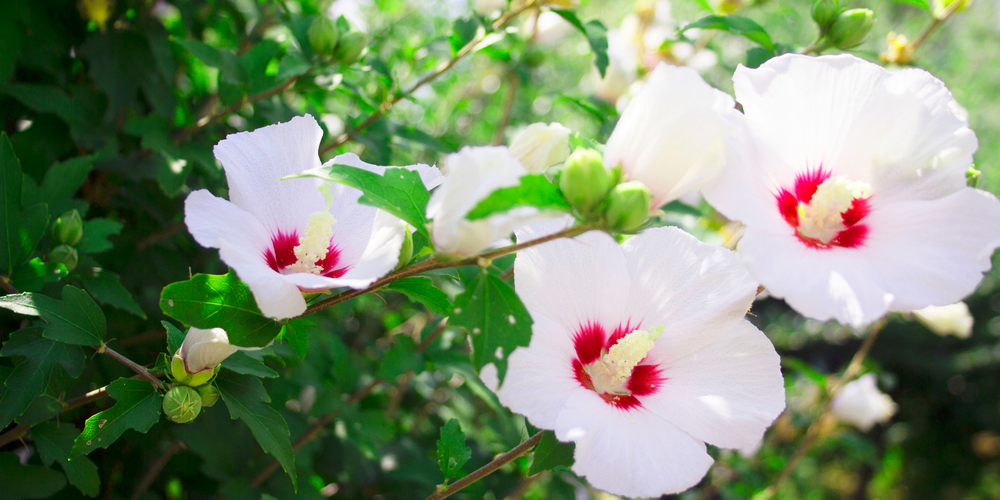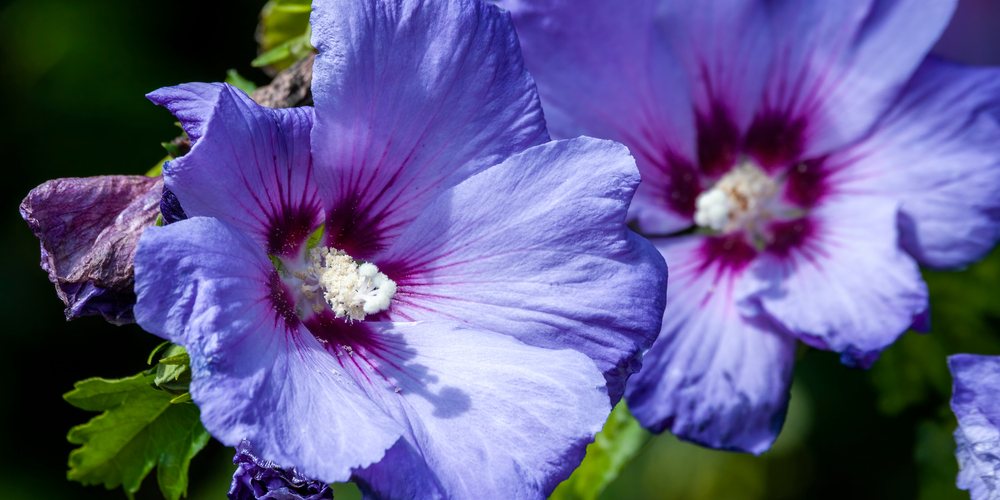Rose of Sharon (Hibiscus syriacus) is best planted in late spring to early summer, after the danger of frost has passed and soil temperatures have warmed. This timing helps ensure that the plant has a solid establishment period before facing the stress of winter.
In regions with mild winters, planting in the fall is also an option, allowing the shrub to establish its root system during the cooler months for a strong start in spring.
Here’s a quick reference table for planting Rose of Sharon:
| Season | Optimal Planting Time for Rose of Sharon |
|---|---|
| Spring | Late spring to early summer, after the last frost. |
| Fall | In mild climates, plant in fall for spring establishment. |
- Location Consideration: Choose a sunny to partially shaded spot with well-drained soil.
- Watering Needs: Provide regular water, especially during the first year, to help establish a deep, extensive root system.
- Mulching: Apply mulch around the base to retain moisture, regulate soil temperature, and reduce weed competition.
Planting during these recommended times allows Rose of Sharon to thrive, offering vibrant blooms from late summer into fall.
Understanding Rose of Sharon Planting Requirements
Rose of Sharon, known botanically as Hibiscus syriacus, thrives when planted in the appropriate conditions. This makes an understanding of its planting requirements essential for optimal growth and bloom display.
Timing:
- Best time to plant: Spring or early fall
- Avoid: Extreme heat or cold
Soil Preparation:
- Hole size: Twice as wide as root ball; depth equal to root ball
- Soil amendment: Incorporate compost or organic matter
Planting Process:
- Hole Preparation: Begin by digging a hole that is suitable for the size of the root ball. Make sure it’s deep enough so that the top of the root ball is level with or slightly above the ground surface.
- Root Treatment: Before planting, gently loosen the soil around the roots if the plant is pot-bound to encourage root spread.
- Positioning: Set the Rose of Sharon in the hole with care to ensure it is straight and that the root ball is at the correct depth.
Spacing:
| Variety | Spacing |
|---|---|
| Smaller | 6 feet |
| Larger | 10 feet |
Spacing between plants depends on the variety of Rose of Sharon, as they can range in size.
Watering:
- Initial: Water thoroughly after planting
- Ongoing: Keep soil moist but not waterlogged
Optimal Timing for Planting Rose of Sharon
Choosing the correct time for planting Rose of Sharon can influence the health and flowering of these robust shrubs. Key to successful planting is understanding the seasonal patterns and local climate conditions.
Seasonal Considerations
Spring and early fall are generally the best times to plant Rose of Sharon shrubs. Planting during these periods allows roots to establish in the moderate temperatures and increased moisture, setting up the plant for more robust growth.
- Spring: Just after the last frost, when the soil can be worked easily.
- Early Fall: At least six weeks before the typical first frost, giving the plant time to root without the stress of extreme heat or cold.
Specific Climate Zones
The United States can be divided into various climate zones, each with their own unique window for planting Rose of Sharon:
- Zones 5-6: These cooler climates are ideal for early spring planting. Fall planting runs the risk of early frosts damaging newly planted shrubs.
- Zones 7-8: Both spring and fall offer suitable planting windows with the extended growing season.
- Zones 9-10: These warmer areas should focus on fall planting to avoid the scorching summer heat during the establishment phase.
Preparing for Planting
Before planting Rose of Sharon, gardeners should focus on preparing the soil properly and choosing an optimal location that ensures the plant receives adequate sunlight.
Soil Preparation
The soil needs to be well-draining and fertile to support Rose of Sharon growth. Gardeners should:
- Amend the soil with organic matter like compost to improve fertility.
- Ensure proper drainage by checking if the soil does not hold water excessively.
- Test the soil pH, aiming for a slightly acidic to neutral pH (6.0 to 7.5).
Location and Sunlight
Selecting the right location is crucial for the health of Rose of Sharon. When assessing the location, gardeners should:
- Choose a site that receives full sun to partial shade.
- Ensure there is enough space for the plant to reach its mature size, typically 6 to 10 feet apart from other plants.
- Avoid windy areas, as strong winds can damage the blooms and branches.
Planting Process
Rose of Sharon, known for its extended blooming period and ease of care, thrives when planted with proper technique and timing. Attention to the initial planting steps ensures a strong foundation for the shrub’s growth and longevity.
Step-by-Step Guide
- Select the Location: Choose a site that gets full sun, with rich and well-draining soil.
- Spacing: Space plants 6-10 feet apart for optimal growth and air circulation.
- Hole Preparation: Dig a hole as deep as the plant’s root ball and twice as wide.
- Planting:
- Remove the plant from its nursery pot carefully.
- Loosen the soil around the roots.
- Position the plant in the hole, ensuring the top of the root ball is level with or slightly above the surrounding soil.
- Backfilling: Fill the hole with soil, gently pressing down around the base of the plant.
- Watering: Water the plant thoroughly to settle the soil and eliminate air pockets.
Aftercare Post-Planting
- Watering: Keep the soil consistently moist, especially during dry spells.
- Mulching: Apply a layer of mulch around the base to retain moisture and regulate soil temperature.
- Pruning: Trim any damaged or broken limbs to maintain a tidy appearance and encourage healthy growth. Pruning is generally best performed in late winter or early spring.
Frequently Asked Questions
When cultivating Rose of Sharon, gardeners often have questions about timing, climate adaptability, growth habits, invasive status, and specific care instructions. These FAQs aim to provide succinct, useful guidance for those looking to grow Rose of Sharon successfully.
What is the optimal time of year for planting Rose of Sharon?
The optimal time to plant Rose of Sharon is either in the spring or early fall. This timing allows the plants to establish roots in moderate temperatures before the stress of extreme weather.
Can Rose of Sharon thrive in cold winter climates?
Rose of Sharon is a hardy shrub with varieties that can withstand cold climates. It is generally suited for USDA zones 5-9 and goes dormant in winter, losing leaves but surviving the cold season well.
Is Rose of Sharon considered an invasive species?
In some regions, Rose of Sharon can be invasive due to its ability to self-seed prolifically. Gardeners should manage seedlings and may consider sterile cultivars to prevent unwanted spread.
How long does it take for Rose of Sharon to reach full maturity?
On average, Rose of Sharon can take about 3 to 4 years to reach full maturity and size, which includes reaching their typical height of 8-12 feet and a width of 6-10 feet, depending on the variety.
What are the growth requirements for a Rose of Sharon hedge?
For a Rose of Sharon hedge, plants should be spaced 6-10 feet apart, placed in a well-draining location with full sun to partial shade, and watered to maintain moist soil until established.
What care should be taken when planting Rose of Sharon in zone 4 environments?
In USDA zone 4, which is at the cooler end of the range for Rose of Sharon, it’s vital to protect the plant in winter with mulch and to choose a sheltered location.
Some varieties may also require additional protection from frost.
Last update on 2025-06-06 / Affiliate links / Images from Amazon Product Advertising API





